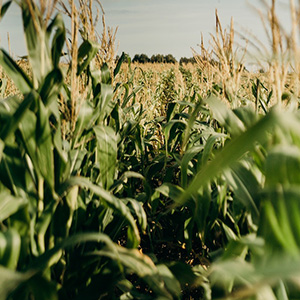Modelling the impacts of water harvesting and climate change on rainfed maize yields in Senegal

Published: 16 June 2023
Abstract Views: 1606
PDF: 568
HTML: 66
HTML: 66
Publisher's note
All claims expressed in this article are solely those of the authors and do not necessarily represent those of their affiliated organizations, or those of the publisher, the editors and the reviewers. Any product that may be evaluated in this article or claim that may be made by its manufacturer is not guaranteed or endorsed by the publisher.
All claims expressed in this article are solely those of the authors and do not necessarily represent those of their affiliated organizations, or those of the publisher, the editors and the reviewers. Any product that may be evaluated in this article or claim that may be made by its manufacturer is not guaranteed or endorsed by the publisher.
Similar Articles
- Samuel Kojo Ahorsu, Hayford Ofori, Jonathan Ampah, Ernest Kodzo Kumah, Maxwell Budu, Effect of variable chipping clearance and operational speed on the cassava chip geometry , Journal of Agricultural Engineering: Vol. 53 No. 2 (2022)
- Damiano Coppolecchia, Davide Gardoni, Cecilia Baldini, Federica Borgonovo, Marcella Guarino, The influence on biogas production of three slurry-handling systems in dairy farms , Journal of Agricultural Engineering: Vol. 46 No. 1 (2015)
- Fuhao Zhu, Jin Chen, Zhuohuai Guan, Yahui Zhu, Hao Shi, Kai Cheng, Development of a combined harvester navigation control system based on visual simultaneous localization and mapping-inertial guidance fusion , Journal of Agricultural Engineering: Vol. 55 No. 3 (2024)
- Azam Rezaei, Hassan Masoudi, Hassan Zaki Dizaji, Mohamad Esmail Khorasani Ferdavani, Modelling, analysis, and optimisation of the rear axle of cereal combine harvester under real loads using finite elements method , Journal of Agricultural Engineering: Vol. 54 No. 2 (2023)
- Frank Agyen Dwomoh, Xingye Zhu, Alexander Fordjour, Junping Liu, Shouqi Yuan, Hong Li, Structural design and performance characteristics of the fluidic sprinkler application technology for saving irrigation water: a review , Journal of Agricultural Engineering: Vol. 54 No. 2 (2023)
- Silvana Fuina, Giuseppe C. Marano, Giuseppe Puglisi, Domenico De Tommasi, Giacomo Scarascia-Mugnozza, Thermo-mechanical response of rigid plastic laminates for greenhouse covering , Journal of Agricultural Engineering: Vol. 47 No. 3 (2016)
- Elio Dinuccio, Jacopo Maffia, Carla Lazzaroni, Gianfranco Airoldi, Paolo Balsari, Davide Biagini, Clinoptilolite (E567), a natural zeolite, inclusion in heavy-pig diets: effect on the productive performance and gaseous emissions during fattening and manure storage , Journal of Agricultural Engineering: Vol. 53 No. 1 (2022)
- Martin Thalheimer, A leaf-mounted capacitance sensor for continuous monitoring of foliar transpiration and solar irradiance as an indicator of plant water status , Journal of Agricultural Engineering: Vol. 54 No. 1 (2023)
- Adeel Rafiq, Wook Ho Na, Adnan Rasheed, Jong Won Lee, Hyeon Tae Kim, Hyun Woo Lee, Measurement of longwave radiative properties of energy-saving greenhouse screens , Journal of Agricultural Engineering: Vol. 52 No. 3 (2021)
- Salvatore Barbagallo, Giuseppe Luigi Cirelli, Simona Consoli, Vincenzo Tamburino, Attilio Toscano, REMOTE SENSING AND SURFACE ENERGY FLUX MODELS TO DERIVE EVAPOTRANSPIRATION AND CROP COEFFICIENT , Journal of Agricultural Engineering: Vol. 39 No. 2 (2008)
<< < 9 10 11 12 13 14 15 16 17 18 > >>
You may also start an advanced similarity search for this article.

 https://doi.org/10.4081/jae.2023.1524
https://doi.org/10.4081/jae.2023.1524







